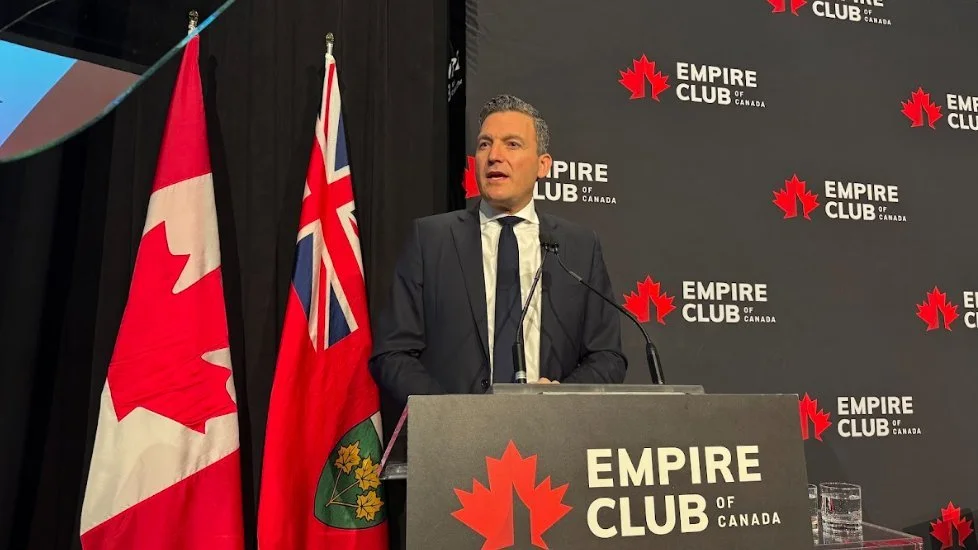A rural lens needed on AI ambitions
As artificial intelligence reshapes industries, rural Canada faces both opportunity and challenge. While AI is already improving healthcare, agriculture, and small business, its broader impact depends on stronger broadband and infrastructure to ensure rural communities can fully share in the benefits.
Experts say stronger broadband and infrastructure are needed to ensure rural communities share in AI’s benefits. / ISTOCK PHOTO
As artificial intelligence mobilizes across sectors, rural Canada stands at a crossroads. Without urgent investment in broadband, infrastructure and capacity, experts warn AI’s potential benefits will fall flat, deepening already existing digital divides.
Canada’s AI Minister, Evan Solomon, has described the stakes bluntly. “AI is a transformational technology that will impact our sovereignty, impact our economy, impact our culture, our workforce and our education system,” he said on the RBC Disruptors podcast.
“If we don't get it right, we're takers, not makers in a new economy.”
Rural Prosperity Group honorary chair Candice Bergen noted that technology and AI are not new to rural communities. “Rural Canadians have been using AI for years — in farming, innovation and manufacturing and across our natural resource sectors. From the Prairies to the North, these technologies are already at work and their role will only continue to grow,” she told Means & Ways.
AI’s promise, and limits
Joy Ardanaz, CGI Health Sector Lead. / CGI PHOTO
One such example is in rural health care. A Canadian-made AI-powered “virtual clinic” first designed for astronauts has the potential to transform healthcare access in rural, remote and Indigenous communities, said Joy Ardanaz, CGI Health Sector Lead.
Originally created for the Canadian Space Agency, the Connected Care Medical Module was meant to support astronauts’ self-care in “extreme medical environments.” Ardanaz said the same concept applies on Earth: “You have to think about people who don’t have ready access to medical practitioners… the same thing happens if you look at our remote and isolated communities.”
The module acts as an autonomous medical unit, using AI to guide patients through checkups, screenings, and telehealth visits. A “virtual concierge” leads users step-by-step, enabling even untrained community members to manage care. AI tools embedded in the system can analyze coughs for conditions like asthma or pneumonia and transmit diagnostic data to remote physicians. Some of the technology is already in use in northern Saskatchewan’s Indigenous health hubs, Ardanaz told Means & Ways.
She argued the innovation could ease barriers that undermine rural prosperity, reducing costly travel for basic appointments such as “maternity visits, well-child visits, and routine screening for chronic conditions.”
Her motivation is personal. Not only did she grow up in Kirkland Lake, a rural area in Northern Ontario, but her mother was injured driving long distances for a medical test. “It’s a big why about the consequences of not having very simple tests available close to home,” she said. “It’s these tools and investing in these tools that build rural prosperity,” Joy said, calling the technology “a critical bridge between innovation and equity in Canadian healthcare.”
Robert Saik, founder and CEO of t1 Technology Corporation, pictured left, is clear-eyed about AI’s potential and its pitfalls. Through AgVisorPro, a mobile app connecting farmers to agriculture experts, and VisorPro.ai, an AI tool for the heavy equipment sector, he is pushing digital tools into some of Canada’s most hands-on industries.
“If we can use AI technology to help us do a better job of determining where precisely to apply products and ideas to make our economics better, whether it’s crops or livestock, that's a good thing.”
But, it’s not the answer to everything, he said, noting the “human in the loop” is crucial.
‘You can't have a smart farm [without] Internet,’ says Robert Saik, founder and CEO of t1 Technology Corporation. / SUBMITTED PHOTO
Saik believes AI should augment, not replace, expertise. He compares it to flying a drone over fields: the technology can analyze and predict where crop treatments are needed, reducing costs and improving efficiency, but it still needs a human to make the decisions.
Indeed, these benefits are being recognized and utilized across Canadian communities. A 2025 report from MNP and Leger found that AI has surged as a priority, rising from 22% in 2024 to 48% in 2025, with its implementation aiding in increasing operational efficiency and the quality of community support.
AI support is “really good” at addressing labour productivity issues in small businesses, where workers may not have the capacity to complete administrative tasks, which could strongly benefit rural workers, said economist Graham Dobbs, a senior research associate at the Conference Board of Canada.
The majority of rural workers who work in goods-producing sectors are self-employed, and could benefit from AI “due to its ability to complete some of these routine administrative tasks more effectively or quicker.”
Yet, Saik is also grounded in the real-world constraints farmers face. “The first issue is foundational, and that is broadband,” he said. Starlink has changed the game for many, but the digital divide remains a major barrier.
“You can't have a smart farm [without] Internet,” he stressed.
“If a municipality, right now, is really limited in all infrastructure, water, wastewater, roads, etc. — that has to be the main focus first in order for economic opportunity to really prosper.”
The digital divide
Canada’s digital divide is still a “very distinct problem,” Dobbs told Means & Ways. The gap is stark in national data. According to the CRTC, while 95.4% of Canadian households have access to 50/10 unlimited broadband, only 78.2% of rural households do.
Municipal leaders echo these warnings. Laurel Feltin, executive director of Saskatchewan Association of Rural Municipalities, warned in a 2025 FCM report that a lack of affordable and reliable broadband access is “one of the biggest things holding our communities back.”
She said: “It’s a necessity for important things like remote work, schooling, virtual healthcare and to run farm equipment.”
Broadband gaps were initially highlighted during the pandemic, according to Feltin, who noted that, as an example, many rural people had to drive to local libraries just to access Wi-Fi.
Limited impacts
AI’s economic impact in rural areas will be limited by the municipality’s existing level of infrastructure and development, suggested Lindsay Blair, founder of 2B Developments and Rural Impact Canada. “If a municipality, right now, is really limited in all infrastructure, water, wastewater, roads, etc. — that has to be the main focus first in order for economic opportunity to really prosper,” she told Means & Ways.
“You do need those fundamental foundation items first before I think any economic opportunity can exist,” added Blair.
Robin Jones, mayor of the village of Westport, and president of the Association of Municipalities of Ontario, agreed. “Infrastructure does not make a community successful; but [it] is a key piece that is needed,” she said in the FCM report.
Policy makers should “focus on the opportunities that do exist in rural and small municipalities” already, said Blair, where there’s a “big desire to support light industrial growth.” But, to realize these opportunities, investment in infrastructure is crucial. Not just in “cell towers and infrastructure for AI, but foundational infrastructure.”
That’s a call echoed nationally. Concluding the FCM report, Carole Saab wrote: “Rural communities are ready to lead, but they need a partner in Ottawa who will match their ambition.”
The path forward
Solomon himself has cautioned that Canada’s traditional “sprinkler system” to funding — spreading thin amounts across many projects — won’t cut it in the AI era. “We have to build pools,” he said. “We can't just sprinkle and everyone gets a little bit and we end up not growing big trees, but we end up just having weeds.”
Investments in rural Canada specifically need to incorporate rural voices and knowledge. Saik believes that AI tools intended to support rural communities have to utilize the experience of the intended users. “We have a tendency to think that the geniuses are in downtown Toronto,” said Saik. “But in fact, the people who actually have the ideas on the problems that need to be solved are the people on the ground closest to the issues.”
This story is part of a series on the impacts of AI on the Canadian economy.
Do you have a unique vantage point on AI and how it will affect Canadians, the economy and the future of work?
We want to hear from you! What should the government be doing to spur business innovation? Can Canada adopt AI quickly enough to compete meaningfully globally? How can we get digital sovereignty right? What are the ‘bold, practical ideas’ that will increase productivity?
Reach out with your solutions: news@meansandways.ca.











